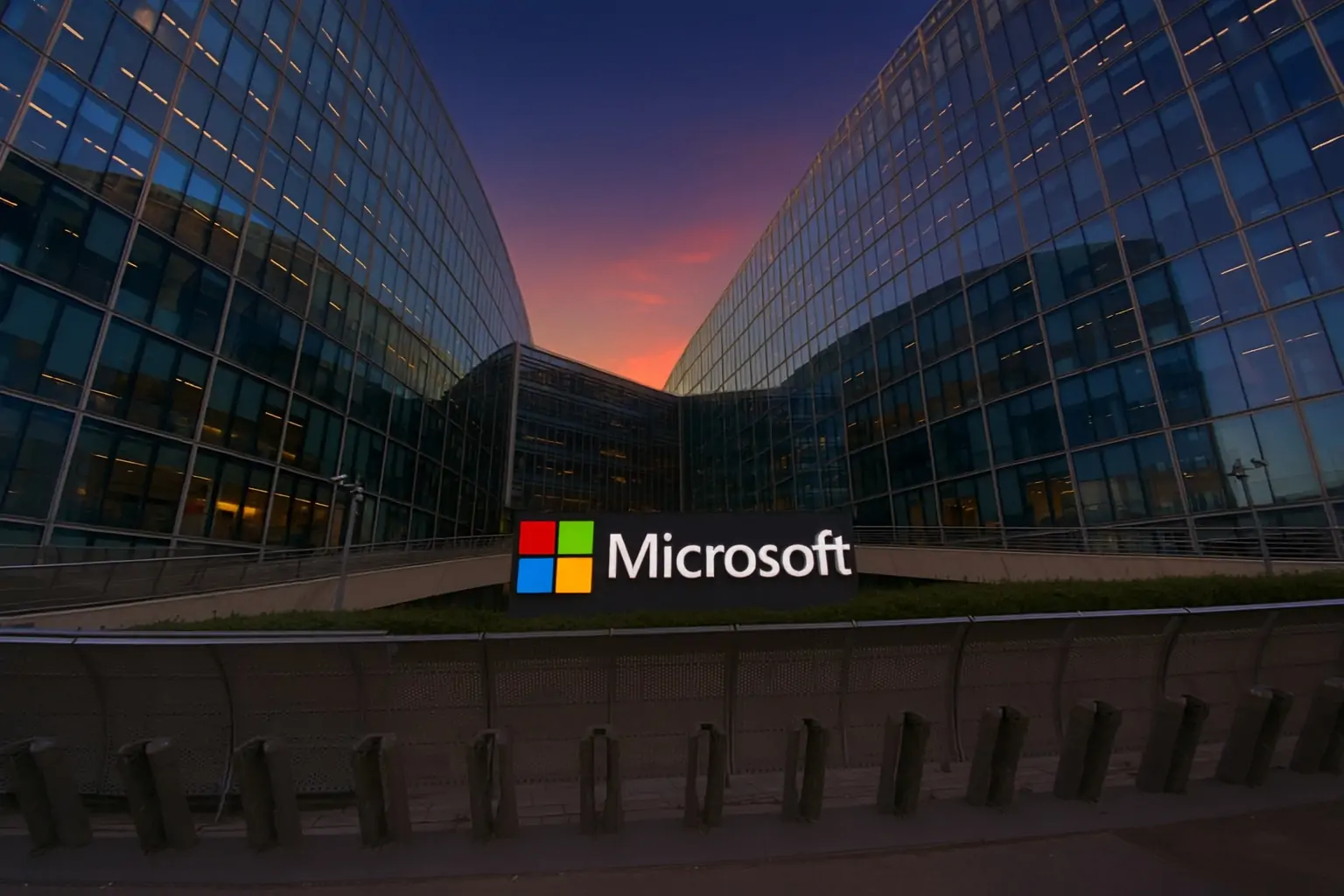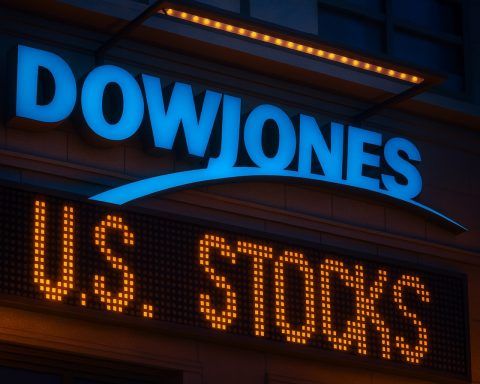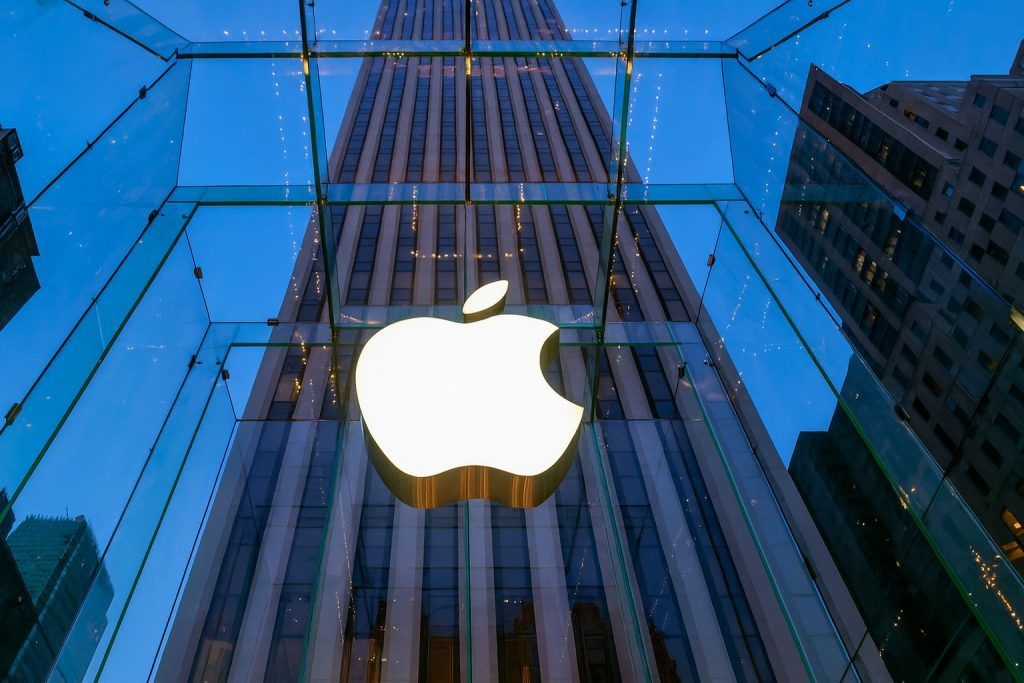Microsoft stock trades around $472 and edges lower on November 21, 2025, as tech shares pull back despite fresh AI investments, a UK AI Growth Zone, and bullish Wall Street targets.
Key takeaways
- MSFT is trading around $472, down roughly 1–1.5% today (Nov 21, 2025), with an intraday range of about $470–$480 and a market cap near $3.9 trillion.
- The pullback follows a sharp tech selloff on Thursday, when Microsoft fell about 1.6% alongside other AI leaders as investors questioned sky‑high valuations. [1]
- Microsoft just unveiled its first “AI superfactory” and is a key partner in a new £10 billion AI Growth Zone in South Wales, expected to create at least 5,000 jobs. [2]
- The Gates Foundation Trust sold ~17 million MSFT shares in Q3, cutting its stake by about 65%, while some hedge funds have also trimmed positions—moves described as portfolio rebalancing rather than a verdict on Microsoft’s business. [3]
- Despite volatility, Wall Street remains broadly bullish: 43 analysts give Microsoft a “Moderate Buy” rating with an average 12‑month price target of $634.33, implying ~35% upside from recent levels. [4]
- Strong fundamentals back the story: full‑year 2025 revenue rose 15% to $281.7B, operating income jumped 17%, and Azure revenue surpassed $75B, up 34%. [5]
All market data in this article is intraday and may change by the close. This is not investment advice.
Microsoft stock price today: MSFT cools after an AI‑driven run
As of the afternoon session on Friday, November 21, 2025, Microsoft (NASDAQ: MSFT) is trading around $472 per share, down about 1.3% on the day. The stock has traded between roughly $470.10 and $479.81, after opening near yesterday’s closing level, and Microsoft’s market value currently sits just under $3.9 trillion.
Today’s decline comes on the heels of a rough session for tech stocks on Thursday. A Zacks market recap notes that the Nasdaq fell more than 2%, with AI‑heavy names under pressure and Microsoft closing down about 1.6% as investors reassessed the sector’s lofty valuations. [6] A separate analysis describes November as another “tech wreck” month, with many big tech names sliding more than the broader S&P 500 as the market shifts from rewarding “AI stories” to demanding clear returns on those massive investments. [7]
Put simply: Microsoft’s stock is consolidating after a powerful AI‑driven run, not collapsing. The move is part of a wider repricing of high‑growth tech, not a Microsoft‑specific blow‑up.
AI superfactory: a new infrastructure milestone for MSFT
One of the biggest fresh catalysts for the stock is Microsoft’s first AI “superfactory”, highlighted in a MarketBeat/Finviz analysis today. [8]
Instead of one mega data center, this superfactory is a distributed network:
- It links sites in Wisconsin and Atlanta into a single coordinated AI training cluster.
- The design shifts from traditional “hyperscale” data centers toward “hyper‑distributed” networks, where many sites work together on the same AI workloads.
- By connecting multiple locations, Microsoft can train larger models faster, squeeze more work out of each GPU, and reduce idle time across its infrastructure. [9]
For investors, the key point is not the engineering detail but the economics:
- The superfactory promises better capital‑expenditure efficiency—more AI compute per dollar of hardware, power, and cooling. [10]
- Analysts in that report argue this could support higher margins and potentially stronger earnings growth over time, even as Microsoft continues to spend heavily on AI. [11]
With Microsoft still early in deploying the hundreds of billions of dollars it has earmarked for AI infrastructure, moves like this suggest the company is trying to bend the cost curve in its favor before AI workloads get even more demanding. [12]
UK South Wales AI Growth Zone: Microsoft deepens its global data‑center footprint
Another big headline today is Microsoft’s role in the UK’s new AI Growth Zone in South Wales.
- The UK government has unveiled a package of AI investments that includes a £10 billion (≈$13B) AI Growth Zone in South Wales, stretching along the M4 corridor from Newport to Bridgend. [13]
- Microsoft and Vantage Data Centers are central private partners in the project, which is expected to create at least 5,000 jobs, with key sites including the former Ford Bridgend Engine Plant. [14]
- Each AI Growth Zone will also receive up to £5 million in government funding to support AI adoption and local skills development, while separate national schemes will provide up to £100 million for UK AI hardware startups and £250 million in free compute for researchers. [15]
For Microsoft, this is not just about PR or job creation. It’s about locking in strategic data‑center locations in a power‑constrained Europe and cementing relationships with governments that want to host sovereign‑grade AI infrastructure.
Combined with the AI superfactory concept in the US, the South Wales Growth Zone underscores a clear theme:
Microsoft is building a globally distributed AI infrastructure network, not just a collection of isolated data centers.
Ignite 2025, Copilot, Agent 365 and security: AI “in the flow of human ambition”
Much of the current Microsoft narrative revolves around Ignite 2025, the company’s flagship developer and enterprise conference held this week in San Francisco. [16]
Key highlights:
- Microsoft is aggressively embedding AI into Microsoft 365, Azure, security, and developer tools, aligning everything around the idea of AI in the “flow of human ambition” – putting copilots and agents directly into the apps workers already use. [17]
- New announcements include Microsoft Agent 365, a control plane for AI agents that helps enterprises inventory, secure, and govern all the agents running across their environment. [18]
- The company rolled out expanded capabilities for Security Copilot, Defender, Entra, Intune and Purview, targeting “ambient and autonomous” security that’s embedded at every layer of the AI stack. [19]
That’s on top of a major AI and cloud push outlined yesterday:
- Microsoft’s Q1 fiscal 2026 results (reported October 29) showed revenue up 18% year‑over‑year to $77.7 billion, driven by ~39% constant‑currency growth in Azure. [20]
- The company also raised its quarterly dividend from $0.83 to $0.91 per share, payable December 11 to shareholders of record on November 20—another signal of confidence in cash‑flow durability. [21]
In short, Ignite 2025 and the recent earnings print reinforce the idea that Microsoft isn’t just talking about AI—it’s monetizing it at scale.
Gates Foundation and hedge‑fund selling: red flag or normal rebalancing?
One of today’s most eye‑catching headlines: the Bill & Melinda Gates Foundation Trust has dramatically reduced its Microsoft stake.
A detailed report shows that in Q3 2025 the trust: [22]
- Sold about 17 million Microsoft shares,
- Cutting its position by roughly 65%, from around $13.9B to about $4.76B,
- Dropping Microsoft from the trust’s largest holding to its fourth‑largest.
The article emphasizes several important nuances:
- The trust has been a regular seller of Microsoft shares for years, apart from a large purchase in 2022.
- Portfolio decisions are handled by Cascade Investments, not Bill Gates personally. [23]
- The selling appears tied to portfolio diversification and the foundation’s plan to increase annual grants to $9B by 2026, rather than any stated concern about Microsoft’s fundamentals. [24]
Separately, a MarketBeat note today highlights that FNY Investment Advisers LLC cut its Microsoft position by about 32.9% in Q2, ending the quarter with 4,484 shares worth roughly $2.23 million. [25] That same filing also shows large institutions such as Vanguard, Northern Trust and UBS continuing to increase or maintain sizable stakes, with institutional ownership around 71%. [26]
Taken together, the picture isn’t “everyone is running for the exits,” but rather:
- Some long‑time holders are trimming or rebalancing after big gains.
- The Gates Foundation still holds billions in MSFT, and major asset managers remain heavily invested. [27]
For retail investors, the key is to distinguish portfolio‑level rebalancing (especially for philanthropic entities) from company‑specific red flags.
Fundamentals: record year, strong cloud engine, and higher dividend
Behind the daily price noise, Microsoft’s core numbers remain potent.
From its 2025 Annual Report (fiscal year ended June 30, 2025): [28]
- Revenue: $281.7 billion, up 15% year‑over‑year.
- Operating income: $128.5 billion, up 17%.
- Azure revenue: surpassed $75 billion, growing 34% year‑over‑year.
- Microsoft Cloud revenue (including Microsoft 365, Azure, LinkedIn, Dynamics) reached $168.9 billion, up strongly from prior years.
The latest quarterly numbers (Q1 FY 2026) extend that trend:
- Revenue up 18% YoY to $77.7B.
- Azure constant‑currency growth around 39%. [29]
On top of this, Microsoft:
- Continues a large share‑repurchase program, with tens of billions of dollars authorized and substantial capacity remaining. [30]
- Recently boosted its quarterly dividend to $0.91, taking the annual payout to about $3.64 per share and keeping the payout ratio below 30%, leaving plenty of room for reinvestment. [31]
These metrics help explain why, despite a recent share‑price pullback, analysts remain broadly positive.
Valuation and Wall Street sentiment: dip in a still‑expensive leader
On today’s price around $472, Microsoft trades at a trailing P/E in the mid‑30s—one data set shows about 36.7x based on recent EPS, while another puts it closer to 34x using slightly different inputs. [32]
That’s not cheap, but it’s broadly in line with how the market has valued Microsoft through most of the AI cycle.
Analyst consensus remains strongly supportive:
- MarketBeat tallies 43 Wall Street analysts covering Microsoft in the past 12 months.
- The consensus rating is “Moderate Buy”, with 0 Sell, 4 Hold, 37 Buy, and 2 Strong Buy ratings. [33]
- The average 12‑month price target is $634.33, implying about 35% upside from a reference price around $469. [34]
- Individual targets go as high as $730, with the low end around $490, underscoring that even the most cautious published target is near today’s trading range. [35]
Recent commentary adds some color:
- A fresh Guggenheim note (Nov 19) reiterated a Buy rating and a $675 target, arguing that Ignite 2025 positioned Microsoft as the platform to “industrialize AI” by embedding copilots and agents across enterprise workflows. [36]
- The AI superfactory article notes that consensus targets around $630+ imply 30%+ upside, even after accounting for recent volatility, and highlights that JPMorgan and RBC both reiterated Buy ratings as recently as this week. [37]
In other words, Wall Street largely sees the current weakness as valuation compression and profit‑taking, not a broken growth story.
Why MSFT is down anyway: three pressure points
So if the fundamentals and news flow are so strong, why is the stock down? Today’s decline (and the broader November slide) largely boils down to three themes:
- AI payback timing
Analysts are increasingly focused on when massive AI capex will translate into profits. A Finviz breakdown notes that investors are no longer satisfied with “good” results from big tech; given stretched valuations, they want “exemplary” numbers and clear evidence that AI investments are earning their keep. [38] - Sector rotation and macro jitters
After a long AI‑led rally, recent data has rekindled worries that the Federal Reserve may be slower to cut rates, which tends to hurt high‑multiple growth stocks first. Thursday’s market recap shows tech and AI names leading the decline, even after strong earnings from Nvidia. [39] - Optics of insider and foundation selling
Headlines about the Gates Foundation dumping millions of shares and hedge funds trimming positions create a “what do they know?” narrative, even when the underlying reasons are portfolio strategy and philanthropy rather than business weakness. [40]
Add these up, and you get a stock that can trade lower in the short term even as its strategic position improves.
What to watch next if you follow Microsoft stock
For traders, long‑term investors, or anyone simply tracking MSFT, here are the key things to monitor in the coming weeks and months:
- AI monetization metrics
- AI infrastructure spending vs. margins
- Global AI policy and regulation
- The UK’s AI Growth Zones, including South Wales, are early examples of governments partnering with hyperscalers like Microsoft to build infrastructure. That could spread—along with more regulatory scrutiny. [45]
- Valuation vs. growth
- If earnings continue to grow mid‑teens or better while the share price consolidates, Microsoft’s P/E multiple could drift down into more comfortable territory without a big earnings miss—something value‑minded investors will be watching closely. [46]
Bottom line
On November 21, 2025, Microsoft stock is down modestly but not dramatically, caught in a broader tech selloff after a powerful AI‑driven rally.
At the same time, the company is:
- Building cutting‑edge AI infrastructure (superfactory, UK AI Growth Zone),
- Doubling down on enterprise AI and security through Ignite 2025,
- Posting record revenue and earnings with strong Azure growth,
- And still enjoying broadly bullish analyst support with double‑digit expected upside from current levels. [47]
Whether today’s dip is a buy‑the‑pullback opportunity or a warning sign that AI valuations remain too rich ultimately depends on your risk tolerance, time horizon, and view of how durable Microsoft’s AI advantage will be.
But judged purely on the numbers and today’s news flow, Microsoft still looks like one of the central players in the global AI build‑out—just trading through a bumpy chapter in that story.
This article is for informational purposes only and does not constitute financial, investment, or trading advice. Always do your own research and consider speaking with a licensed financial advisor before making investment decisions.
References
1. www.nasdaq.com, 2. finviz.com, 3. coincentral.com, 4. www.marketbeat.com, 5. www.microsoft.com, 6. www.nasdaq.com, 7. finviz.com, 8. finviz.com, 9. finviz.com, 10. finviz.com, 11. finviz.com, 12. finviz.com, 13. www.datacenterdynamics.com, 14. www.gurufocus.com, 15. www.computing.co.uk, 16. markets.financialcontent.com, 17. markets.financialcontent.com, 18. www.microsoft.com, 19. www.microsoft.com, 20. markets.financialcontent.com, 21. markets.financialcontent.com, 22. coincentral.com, 23. coincentral.com, 24. coincentral.com, 25. www.marketbeat.com, 26. www.marketbeat.com, 27. coincentral.com, 28. www.microsoft.com, 29. markets.financialcontent.com, 30. www.microsoft.com, 31. www.marketbeat.com, 32. www.marketbeat.com, 33. www.marketbeat.com, 34. www.marketbeat.com, 35. www.marketbeat.com, 36. finviz.com, 37. finviz.com, 38. finviz.com, 39. www.nasdaq.com, 40. coincentral.com, 41. markets.financialcontent.com, 42. markets.financialcontent.com, 43. finviz.com, 44. www.microsoft.com, 45. www.gurufocus.com, 46. www.microsoft.com, 47. finviz.com







